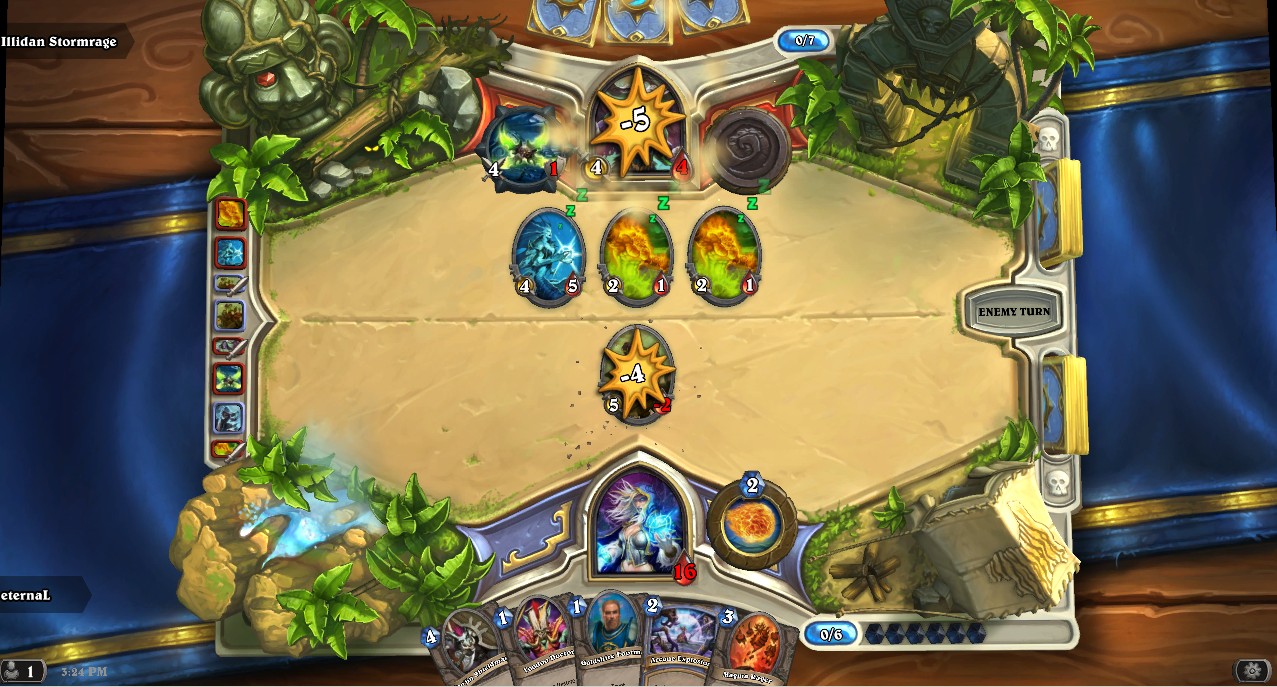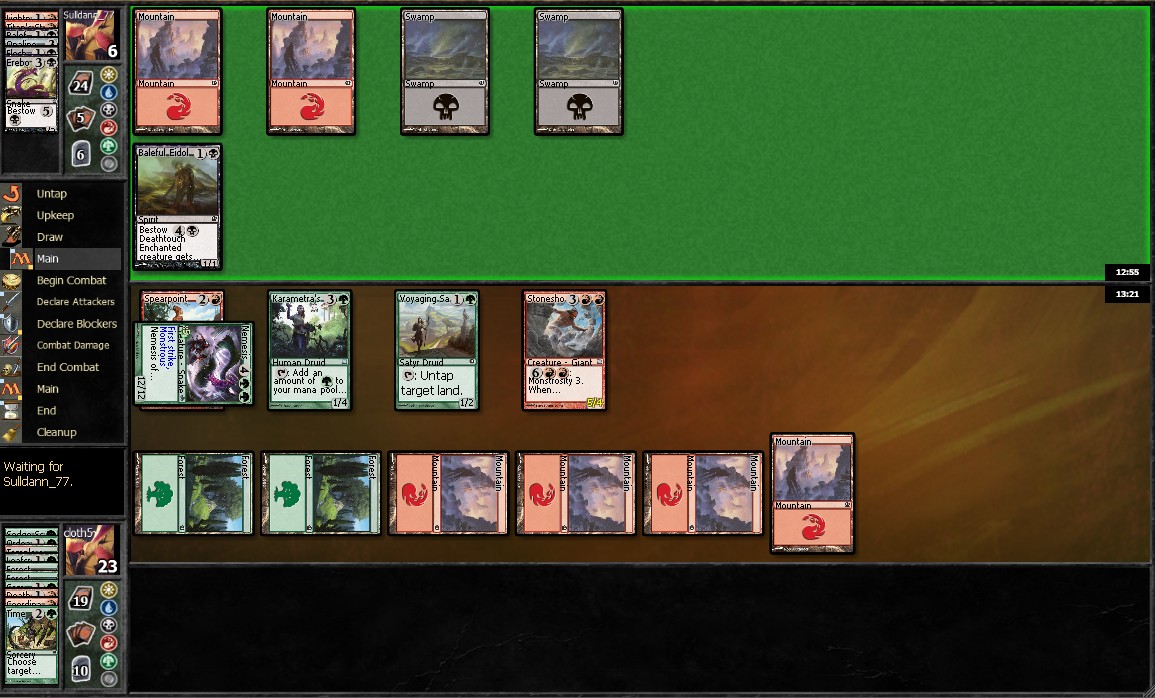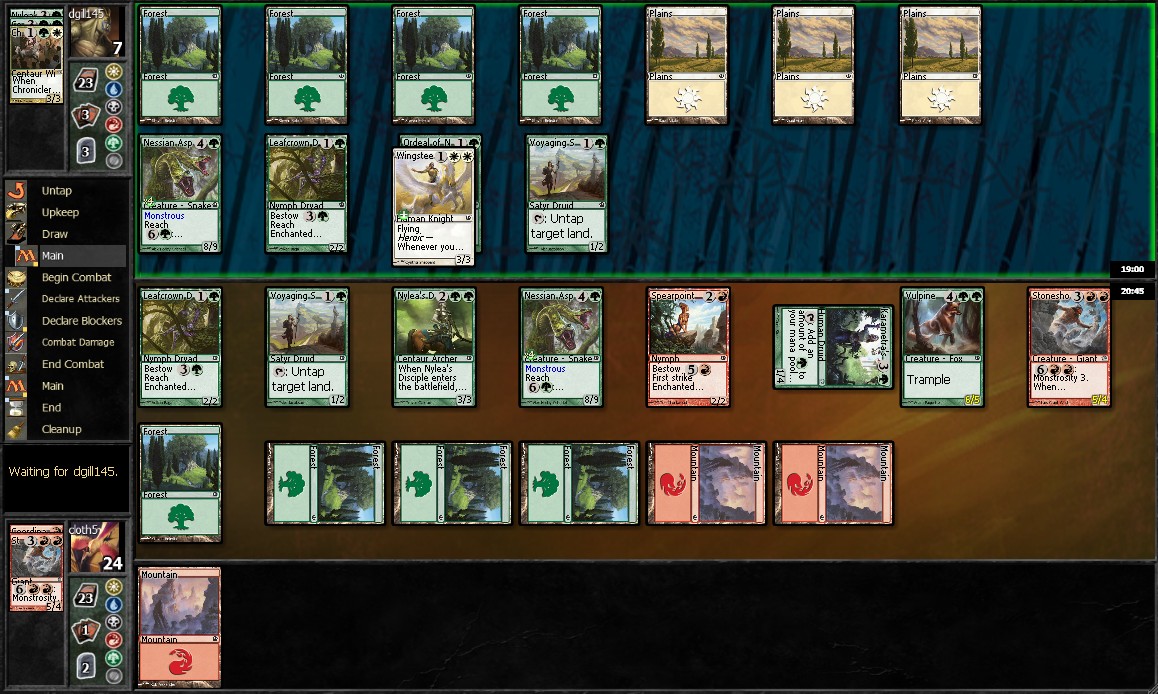Blizzard’s Hearthstone has been making waves. The digital-only trading card game is still in closed beta, but that hasn’t stopped it from attracting a lot of attention from the gaming community. Having received my beta invite a few weeks ago, I decided to take a break from Theros drafts (at which I’ve been marginally improving) and explore the new frontier of trading card games.
The first thing I noticed about Hearthstone: this game is slick. Graphics are colorful, laced with Blizzard’s characteristic whimsy and good humor. They know how to make games pop. The user interface is consistently intuitive, responsive, and easy to follow. It’s a world apart from the stark design and occasionally wonky user interface of Magic Online (or even its new beta client). Actually, comparing the two programs would be silly. They’re a couple generations apart.
On that note, I like noting the similarities between Hearthstone and Duels of the Planeswalkers, a rather underrated Magic game that gets a lot of things right. I think there’s one major quality that makes DotP so highly recommended for new players: visual cues. If your creature had flying, the card hovered over the battlefield. Giant warning signs were painted onto deathtouch spiders, and the stages of combat were displayed in graphical notation. Everything was neatly laid out, as if that Microsoft Office paperclip was helpfully guiding you through the intricacies of first strike and countering spells on the stack. Some of my friends that shied away from playing paper Magic sank dozens of hours into its colorful virtual counterpart. All the animations and sound effects gets tiresome after a while. But by then, most are ready to sink some hard cash into paper magic, or its online counterpart.
After a few months, I began to appreciate the sparse, utilitarian feel of the classic Magic Online client. But I think it’s an acquired taste, and if I was a completely new player I would definitely gravitate toward Hearthstone’s more modern sensibilities. I don’t think that’s a bad thing. And I’m certainly not recommending that Wizards overhaul their game client by giving every creature a unique attack animation (although that would be pretty sick).
But what about gameplay? Is there a reason that my Magic-playing friends flick their cards and scoff at the mention of “Kidstone?” Having cut my teeth on the relatively unforgiving format of Limited, Hearthstone’s game flow was fairly straightforward. You had your assortment of damage shields, charge (haste), and token generating effects. Creatures are able to attack opponents directly regardless of whether or not they had their own critters on the field, unless one of them contained the keyword Taunt. Aside from that, cards are fairly straightforward. More complex mechanics involve taking (usually permanent) control of enemy minions. One class, the Mage, has a counterspell, but I’ve rarely seen it played in high level constructed play. There are no intricate interactions. And the lack of instant-speed spells drastically smoothed the learning curve.
Concepts like card advantage, board control, and premium removal are key players in both games. As a complete newbie, I was able to breeze through the tutorial and handle the game’s AI battles with ease, laughing maniacally as they overextended and lost all their creatures to a board wipe. My early forays into matchmaking and Arena (Hearthstone’s interpretation of Draft) were met with early success.
If anything, Hearthstone’s mechanics are more intuitive to players new to card games. And a lot of their innovations (the elimination of mana screw and flood, streamlined drafting system, RPG-like level-up system) appeal to beginners. When I was able to play my fat creatures without the fear of an impending [casthaven]Dissolve[/casthaven], I felt a bit more powerful. The elimination of mechanics like forced opponent card discard, milling, counters, and color-hate leads to system that, well, creates lines of play that appeals to new gamers—getting creatures into play, buffing them, and smashing your enemy’s creatures. Hearthstone’s Arena system is based upon matchmaking, not eight-man pools. It allows you to draft a deck and play a few games at your leisure, cutting down on the multiple hour blocks required for a good round of MTG limited.
With all of its merits and scrub-friendliness, I think Hearthstone is poised to become a premier digital trading card game. But to replace Magic? I don’t think I see that happening. For all of the grief that Magic’s intricate rule system (and multiple turn phases, and combat mechanics, and mana flood) has given me, I think the end result has been well worth the (steep, precipitous) learning curve.
I’m not about to relocate to the world of Hearthstone, and I’m not sure if I ever will. But in the coming weeks and months, it’s a game that I, like a lot of others in the community, am keeping my eyes on.




